| GISdevelopment.net ---> AARS ---> ACRS 2004 ---> New Generation Sensors and Applications: Hyperspectral Sensing |
The perfomance of groundbase
mobile platform for C-Band Microwave Scatterrometer System
H.Aziz, N.N.Mahmood, A.Ali,
H.Jamil, K.A.Mahmood, Z.Ahmad, N.Ibrahim
Malaysian Centre for Remote Sensing,
No. 13, Jalan Tun Ismail, 50480 Kuala Lumpur.
Tel : 03-26966926 Fax : 03-26973360
Email: halim@macres.gov.my
P.V.Brevern, H.T.Chuah V.C.Koo, L.K.Sing
Faculty of Engineering and Technology, Multimedia University
Jalan Ayer Keroh Lama, 75450 Melaka, Malaysia
Tel : +606-252 3004 Fax : +606-231 6552
Email: pv.brevern@mmu.edu.my
Malaysian Centre for Remote Sensing,
No. 13, Jalan Tun Ismail, 50480 Kuala Lumpur.
Tel : 03-26966926 Fax : 03-26973360
Email: halim@macres.gov.my
P.V.Brevern, H.T.Chuah V.C.Koo, L.K.Sing
Faculty of Engineering and Technology, Multimedia University
Jalan Ayer Keroh Lama, 75450 Melaka, Malaysia
Tel : +606-252 3004 Fax : +606-231 6552
Email: pv.brevern@mmu.edu.my
Abstract
The procurement of a mobile microwave scatterometer platform involved the consid-eration to ensure a mobile platform and equipment selected full-filled technical requirement and safety standard in Malaysia. Designing, and modification works involved engineering method-ology in determining and selecting a suitable hydraulic telescopic boom that suit a selected mobile platform available locally. The mobile platform is a delivery system for microwave re-mote sensing microwave scatterometer and other accessories to any locations in Malaysia. Total loading to be carried by the mobile platform is 4500 kg and its overall weight must be 16,000 kg as recommended by hydraulic telescopic boom manufacturers. The telescopic boom will elevate microwave scatterometer system including the antenna to a maximum height of 27 m, and can also be rotated through 360 o . A mechanism is incorporated in the system to enable tracking or monitoring angular movement of the hydraulic telescopic boom when positioned towards prede-termined target.
Introduction
This is a joint venture project between Malaysian Centre for Remote Sensing (MACRES) and Multimedia University (MMU) The project is an effort by MACRES to strengthen Malaysia’s capability in fundamental microwave remote sensing. MMU with its excellent electronic per-sonnels were given the task to build microwave scatterometer system while MACRES was given an electromechanical task to design a mobile platform that will render ground base re-mote sensing scatterometer system mobility.
MACRES team was also involved in the procurement contract besides designing mobile plat-form and other mechanical system including mechanism for antenna mounting that will elevate the scatterometer system 27 m above ground level. Understanding the material properties of aluminium plates and brackets and tensile properties of mild steel fasteners material for bolt and nuts were necessary in designing antenna mounting for the antenna. Optical encoder, to de-tect antenna inclination angle was also incorporated into the system.
The scope of the work is to design and making mobile platform and equipment selection and finally execute modification work to make it suitable to house work cabin, telescopic boom, microwave remote sensing scatterometer system, diesel generator for the system power re-quirement. Concealed type diesel power generator was selected for its low noise and low vibra-tion factor. Telescopic boom selected must be able to deliver microwave system to a height determined by the researchers and can be positioned towards required direction by computer sig-nal from the work cabin. Material for boom construction must be of the type that produce minimum deflection and vibration under wind induced forced and under its own weight. Suit-able room air-conditioning system to ensure equipment and system long life span and conducive working environment.
Mobile Platform Selected
195 hp engine was selected for the mobile platform. The mobile platform will float on its four hydraulic stabilizers as a pre-equisite condition for safe operation. This hydraulic stabilizer will also function as vibration dampers.
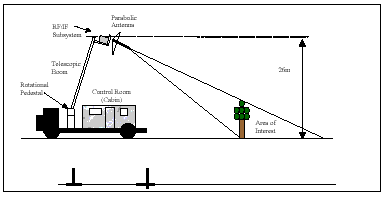
Fig. 1.0 :Geometric coverage of mobile scatterometer
Deflection of Telescopic Boom, y
Moment of inertia I, slop , deflection y and other perimeters were required to determine vehi-cle stability at site [1].


Tranverse Vibration of Telescopic Boom
A cantilever experiences transverse deflection or static deflection under its own weight due to gravity [2]. ..as the deflection, its vibration was derived as,

Expected target range of this microwave scatterometer is 100.0 m. A distance of 200 m, to and fro is the total distance traveled by the microwave. Therefore the number of round trips made were

Vibration at this rate was considered low and the time interval is enough for microwave to hit the target and return to the receiver and recorder for registeration ! Aneometer for wind speed measurement was also installed to ensure save working weather condition.
Power Requirement
Power requirement of the system is provided by concealed type 12.5 KVA diesel generator. Pro-vision for additional power requirement is provided for near future upgrading of the mobile mi-crowave scatterometer.
Antenna Mounting
For antenna and microwave component mounting, diameter of bolt and fasteners were are taken seriously. Extra factor of safety for bolt sizes were also considered. Taking the moment about Hm, [3], was one of the method used to determine diameter and stresses in mounting fasteners (bolt and nuts).

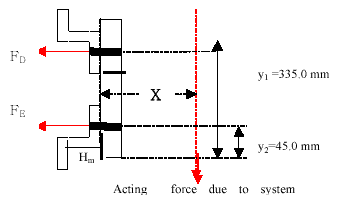
Fig. 2: Stresses in fasteners in horizontal antenna mounting
Bolt and nuts of nominal sizes of 6.0 mm were used to ensure safety, easy handling and to com-pensate for unexpected factors relating to safety [4].
Mounting was done by taking advantage of the C-beam used as sky platform at the top of tele-scopic boom.
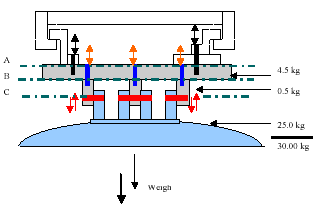
Fig. 3.0: Mounting bracket and stresses in fasteners

Fig. 4 : Boom truck with microwave Scatterometer system
Result
Test measurement and onsite measurements were done by using four polarization modes (HH, HV, VV, VH), at various incidence angle, , ranging from 0 o to 60 o .
Calibration test
This was done on trihedral 31.0m HH at MACRES testing site:
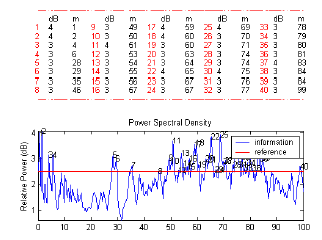
Fig. 5 Point target test
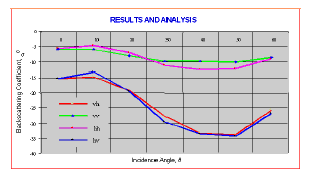
Fig. 6. Backscattering coefficient, s o vs Inci-dence angle,
Conclusion
Most of the field works were conducted in a state of Selangor. A measurement has been con-ducted at Sungai Burung paddy field area by using a ground-based mobile C-band scatterometer system. The measurement result showed a typical response of backscattering coefficients as compared to other reports.
Fig 6, showed the result of the measured backscattering coefficient, .., of the paddy at various incidence angle, . Each point on the graph represents a mean of 20 independent measure-ments. This result showed that the backscattering coefficient increases at incidence angle close to nadir and then decreases until certain point and increases again. This trend is similar to the results reported by other research groups [5]. Observation result concluded that the me-chanical system comprising of telescopic boom, antenna mounting, diesel power generator, optical encoder for angular tracking all worked perfectly. Satisfactory and acceptable data qualities were achieved. The speed at which microwave transversed the space was too great for me-chanical vibration to give any adverse effect to the backscattering measurement. This prelimi-nary result proved that this system will be one of the useful and most reliable tool for micro-wave remote sensing research in Malaysia. This system will be used to develop theoretical model for major crops such as paddy, oil palm and rubber.
Acknowledgement
The authors and the team wish to thank En. Raja Zainol Abdulllah from AIDP Kuala Selan-gor, resident of Sungai Burung for their support during the field measurement work.
References
- Problem and Solutions in Engineering Mechanics- Static and Dynamics. V.S Mokashi 1999. Tata McGraw-Hill Publishing Company Limited. Pg. 217/218
- Mechanics of Machines Advanced Theory and Examples. John Hannah & R.C Stephens. 1972. Edward Arnold Publishing, London. Pg. 345.
- Mechanics of Engineering Materials. P.P Benham, R.J Crawford.1994. ELBS with Longman Group U.K Limited. Pg. 599
- Mechanical Machine Design, R.C. Bahl, V.K. Goel. 1 st . Edition 1974. Standard Publish-ers Distributors. Pg. 369.
- Soo Bum Kim, Byung Wook Kim, Young Kyun Kong, and Young-Soo Kim, 2000. Radar Backscattering Measurement of Rice Crop Using X-band Scatterometer, IEEE Trans. Geosci. Remote Sensing, Vol 38, pp 1467-1471.